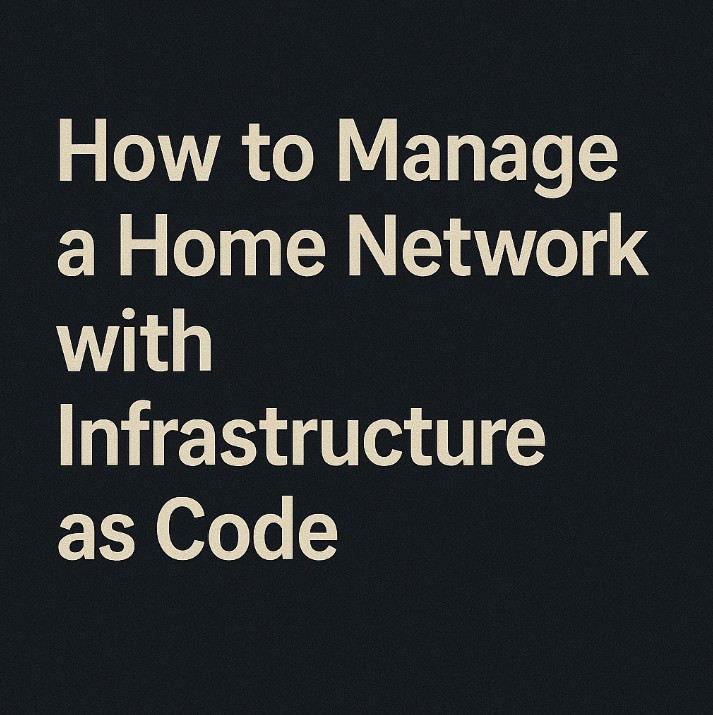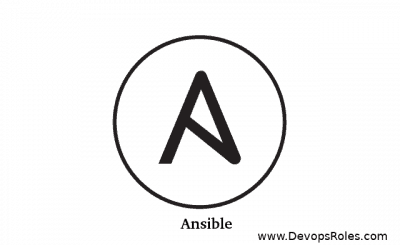For years, managing a home network has meant a tangle of cables, manual configurations, and frustrating troubleshooting. But what if you could automate this entire process, making your home network more reliable, easier to manage, and even more secure? This is where Infrastructure as Code (IaC) comes in. This guide explores how to leverage the power of IaC to manage your home network, transforming a complex task into a streamlined and efficient operation. We’ll explore various tools, techniques, and examples, empowering you to take control of your home network like never before.
Table of Contents
Understanding Infrastructure as Code (IaC) in a Home Network Context
Infrastructure as Code (IaC) is the practice of managing and provisioning computer data centers through machine-readable definition files, rather than physical hardware configuration or interactive configuration tools. While often used for large-scale enterprise deployments, the principles of IaC can be incredibly beneficial for home network management. Instead of manually configuring your router, switches, and other network devices, you define their configurations in code. This approach offers numerous advantages:
- Automation: Automate the entire network setup and configuration process.
- Reproducibility: Easily recreate your network environment consistently.
- Version Control: Track changes to your network configuration over time using Git or similar tools.
- Scalability: Easily scale your network as your needs evolve.
- Reduced Errors: Minimize human error associated with manual configurations.
- Improved Reliability: Ensure consistent and reliable network performance.
Choosing the Right IaC Tools for Your Home Network
Several IaC tools are suitable for managing a home network, each with its strengths and weaknesses. Here are a few popular options:
Ansible
Ansible is a powerful and agentless automation tool. Its simple YAML syntax makes it relatively easy to learn, even for those new to IaC. Ansible excels at configuring network devices using modules specifically designed for routers and switches. You can use Ansible to manage tasks like setting up VLANs, configuring DHCP, and managing firewall rules. Learn more about Ansible.
Terraform
Terraform, developed by HashiCorp, is an infrastructure-as-code tool that allows you to define and manage your infrastructure in a declarative way using HashiCorp Configuration Language (HCL). While more complex than Ansible, Terraform’s strength lies in its ability to manage diverse infrastructure components, including cloud services, which can be useful if your home network incorporates cloud-based elements. Learn more about Terraform.
Puppet
Puppet is a robust configuration management tool that uses a declarative language to define the desired state of your infrastructure. While perhaps more complex to learn initially, Puppet’s features provide extensive capabilities for managing complex network environments. It’s commonly used in enterprise environments but can be adapted for home use. Learn more about Puppet.
Examples: Applying IaC to Your Home Network
Let’s explore some practical examples of how you can use IaC to manage different aspects of your home network:
Example 1: Configuring DHCP with Ansible
Ansible’s simplicity makes it ideal for managing basic network configurations. Below is a simplified example of using Ansible to configure DHCP on a router (replace placeholders with your actual values):
---
- hosts: router
become: yes
tasks:
- name: Configure static IP for DHCP
command: ip addr add 192.168.1.1/24 dev eth0
- name: Enable DHCP service
command: /etc/init.d/dhcpd restart
Example 2: Creating VLANs with Terraform
If you’re working with a more advanced home network and need VLANs (virtual LANs), Terraform’s declarative nature shines. You could define your network topology and VLANs within a Terraform configuration file, making it easy to recreate or modify the network structure as needed. The actual code would be more complex and would depend on the specific router and provider you use.
Example 3: Managing Firewall Rules with Ansible
Security is paramount. Ansible can automate the management of firewall rules on your router, ensuring a consistent and secure network configuration. You can define rules to allow or block specific traffic based on ports or IP addresses. The specific commands will depend on your router’s firewall configuration interface.
Advanced IaC Concepts for Home Networking
As your home network grows in complexity, you might consider more advanced IaC practices:
Version Control (Git)
Store your IaC code in a Git repository (like GitHub, GitLab, or Bitbucket). This allows you to track changes, revert to previous configurations, and collaborate on network management if you have multiple users.
Automated Testing
Implement automated tests to verify that your IaC code functions correctly before applying changes to your live network. This prevents accidental disruptions.
Continuous Integration/Continuous Deployment (CI/CD)
Integrate your IaC workflow into a CI/CD pipeline to automate the deployment and testing process. Changes to your IaC code can be automatically tested and deployed to your home network, enhancing efficiency and reducing the risk of errors.
Frequently Asked Questions (FAQ)
- Q: Is IaC necessary for a small home network? A: While not strictly necessary for a very small, simple network, IaC provides significant benefits in terms of automation, reproducibility, and long-term management, even for smaller setups. The learning curve is the main barrier.
- Q: What if my router doesn’t support IaC directly? A: Many routers have command-line interfaces (CLIs) or APIs that allow for scripting and automation. You can use IaC tools to interact with these interfaces.
- Q: What are the security implications? A: Storing your network configuration in code requires careful security practices. Use strong passwords, secure your Git repository, and follow best practices for securing your network infrastructure.
- Q: What if I make a mistake in my IaC code? A: Proper testing and version control are crucial. Always test your changes in a non-production environment (if possible) before applying them to your live network. Version control allows you to easily revert to previous working configurations.
- Q: Which tool is best for beginners? A: Ansible’s simpler syntax and agentless nature make it a good starting point for beginners.

Conclusion
Managing a home network with Infrastructure as Code offers a significant advantage over manual configuration. While there’s a learning curve involved, the benefits of automation, reproducibility, and enhanced reliability make it a worthwhile investment, especially as your network complexity grows. By mastering IaC techniques, you can transform your home network management from a tedious chore into a streamlined and efficient process.
Start with a basic configuration using a tool like Ansible, and gradually incorporate more advanced features as your expertise grows. Remember to prioritize security and testing to ensure a stable and secure home network.Thank you for reading the DevopsRoles page!

